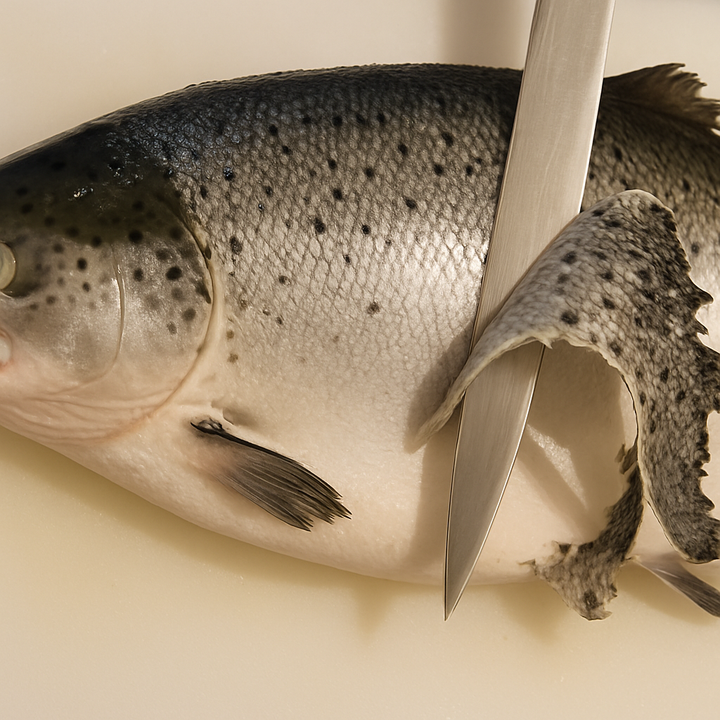Heritage Thanksgiving Turkey: Everything You Need To Know
This article is your comprehensive guide to understanding everything about Heritage Turkeys, domesticated from American wild varieties and celebrated for their varied breeds and beauty, often the centerpiece of Thanksgiving, symbolizing abundance and tradition.

Domesticated turkeys, originating from wild varieties in North and South America, are central to American culinary tradition.
Over centuries, various breeds have been developed, not just for consumption but also for their distinctive beauty. The American Poultry Association recognizes eight main varieties, including the Black, Bronze, Narragansett, and others, while The Livestock Conservancy notes additional breeds like the Jersey Buff.
These diverse breeds, known as Heritage Turkeys, are often the centerpiece of Thanksgiving feasts, symbolizing abundance and tradition.
What is Heritage Turkey?
Heritage turkeys are traditional breeds that have been around long before commercial turkeys were developed.
These breeds, such as the Narragansett, Bourbon Red, Bronze, Black and Jersey Buff, are known for their slower growth rate, longer lifespan, and ability to mate naturally. They are prized for their rich flavor and firmer texture compared to conventional turkeys.
Heritage turkeys are often raised in free-range environments, allowing for a more natural lifestyle. Their unique qualities make them a popular choice for gourmet cooking and traditional American celebrations like Thanksgiving.
Heritage Turkey Criteria
Heritage turkeys are distinguished by their traditional, free-range upbringing. To be classified as a Heritage turkey, they must adhere to specific criteria:
- Natural Reproduction: Heritage turkeys must breed naturally, with expected fertility rates between 70-80%. This ensures that both the grandparent and parent generations are produced through natural mating, maintaining the "heritage" label.
- Longevity in Outdoor Environments: These turkeys are expected to have a lengthy, productive life outdoors. Typically, breeding hens remain active for 5-7 years, and toms for 3-5 years. They must also possess the genetic resilience to thrive in outdoor conditions.
- Measured Growth: A key characteristic of Heritage turkeys is their gradual growth rate. They reach market weight around 28 weeks, allowing ample time for developing robust bones and organs before muscle mass. This growth timeline mirrors that of early 20th-century commercial breeds, ensuring a more natural development process.

Heritage Turkeys Are More Expensive Than Conventional Turkey. Heres Why:
Heritage turkeys carry a higher price tag compared to standard supermarket turkeys for several reasons.
Industrial turkeys are bred to reach weights up to 40 pounds within just 19 weeks, a process facilitated by genetic modifications that disrupt their natural satiety response, leading to continuous eating.
In contrast, heritage turkeys grow more slowly, without such genetic alterations. For example, a typical heritage tom turkey reaches about 24 pounds in 24 weeks, growing at a natural pace without the issues of rapid, unnatural weight gain.
The cost of raising heritage turkeys is also significantly higher. Farmers face increased expenses in processing, often paying two to three times more than for industrial turkeys.
Transportation costs are also notably higher, sometimes five to ten times more than their commercial counterparts.
This financial strain is particularly challenging for independent farmers, who often find the economics of poultry farming less profitable than even ancillary industries, like those producing packaging materials.
This combination of slower, more natural growth and higher operational costs contributes to the premium price of heritage turkeys.
Heritage Turkeys Are More Difficult to Process
Processing heritage turkeys, particularly older toms, can be challenging due to their tough necks, making a clean cut difficult.
Many processors share stories of difficulties with these breeds. The most effective method for humane dispatch is decapitation with a sharp axe on a chopping block.
Heritage turkeys, known for their vigorous and muscular build, are harder to handle than chickens. It's often easier to have one person hold the turkey while another performs the chop, ensuring a quicker and more efficient process.
Heritage Turkeys Taste the Best for Thanksgiving
Several factors influence the taste of turkey meat, including the breed's genetics and the bird's level of physical activity.
For instance, many of my turkeys roost in trees overnight, which is indicative of their active lifestyle. This mobility impacts their meat at a cellular level, enhancing its flavor, texture, and aroma.
The closer a turkey's genetics are to its wild ancestors, the more superior the quality of its meat.
In contrast, industrially raised turkeys, often bred for rapid growth, lack this quality. Their limited mobility and accelerated growth impede the development of nutritional qualities in their muscles, such as proper oxygenation and mobility.
This often results in meat that is paler and nutritionally inferior. In heritage turkeys, however, the meat is darker, indicating a richer and more robust flavor.
This is due to their ability to engage in natural behaviors like running, jumping, and flying.
Many people who have tried heritage turkey meat, especially those who previously didn't prefer dark meat, notice a significant difference in its deep, rich flavor.

Special Cooking Methods For Heritage Turkeys
Heritage turkeys, known for their smaller size and tendency to dry out, require specific cooking techniques for optimal juiciness.
Experts recommend barding with bacon or pancetta, covering the breast with oil-soaked cheesecloth, or applying butter or duck fat under the skin. These turkeys cook faster than larger commercial birds.
To check doneness, insert a thermometer at the thigh-breast joint; a reading of 145 degrees Fahrenheit indicates it's time to remove it from the oven.
Allow the turkey to rest at room temperature for at least 20 minutes before carving, which is crucial for juiciness.
While the USDA suggests cooking turkey to 160 degrees, the carryover cooking during resting typically brings the bird to this temperature. For extra safety, you may cook it until it reaches 160 degrees internally.
Conclusion
Heritage turkeys represent traditional turkey breeds, known for their free-range upbringing and natural mating practices, as outlined by the Livestock Conservancy.
They offer a taste experience akin to wild turkeys and are integral to the revival of slow food and natural farming practices in Western cuisine.
While renowned for their exceptional flavor, heritage turkeys come with a higher price tag.
For those seeking a balance between quality, environmental consciousness, and convenience, choosing pasture-raised, free-range turkeys is an excellent alternative to more common, commercially raised breeds.


